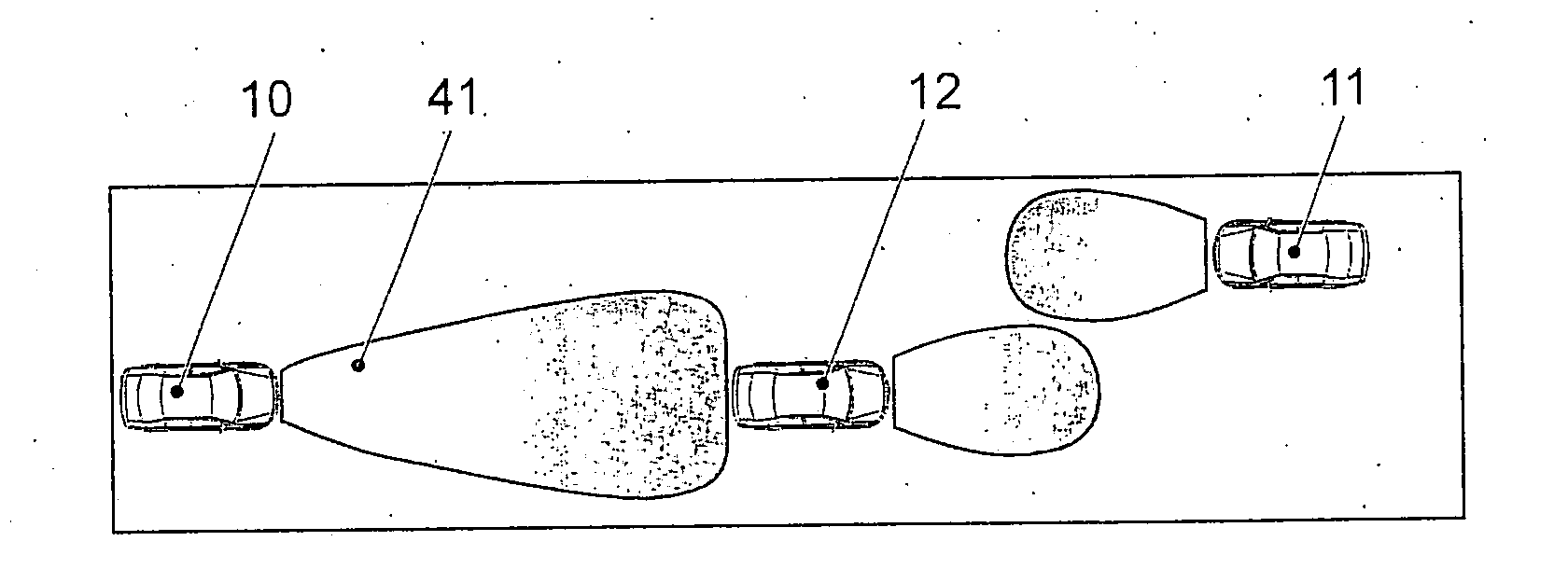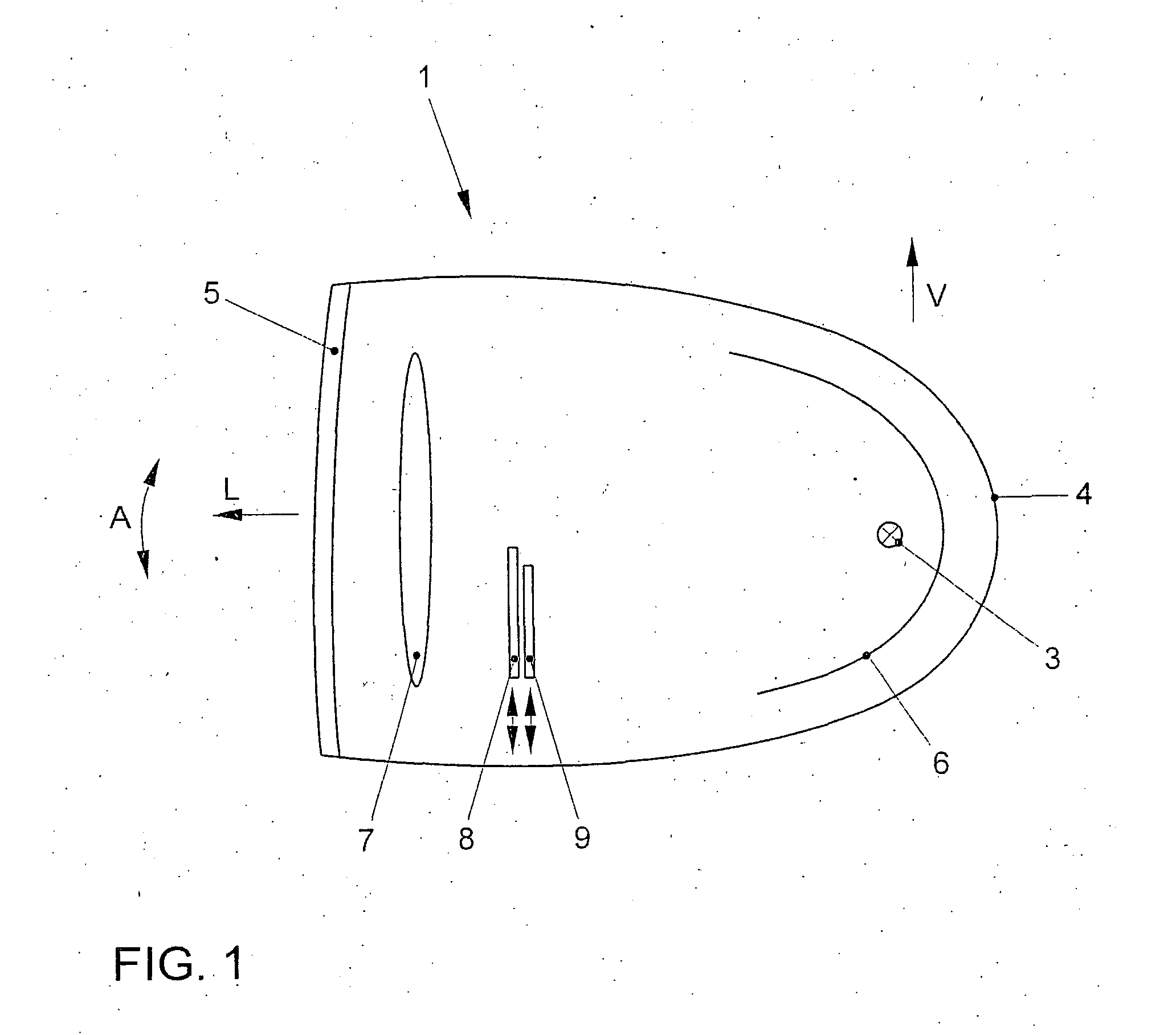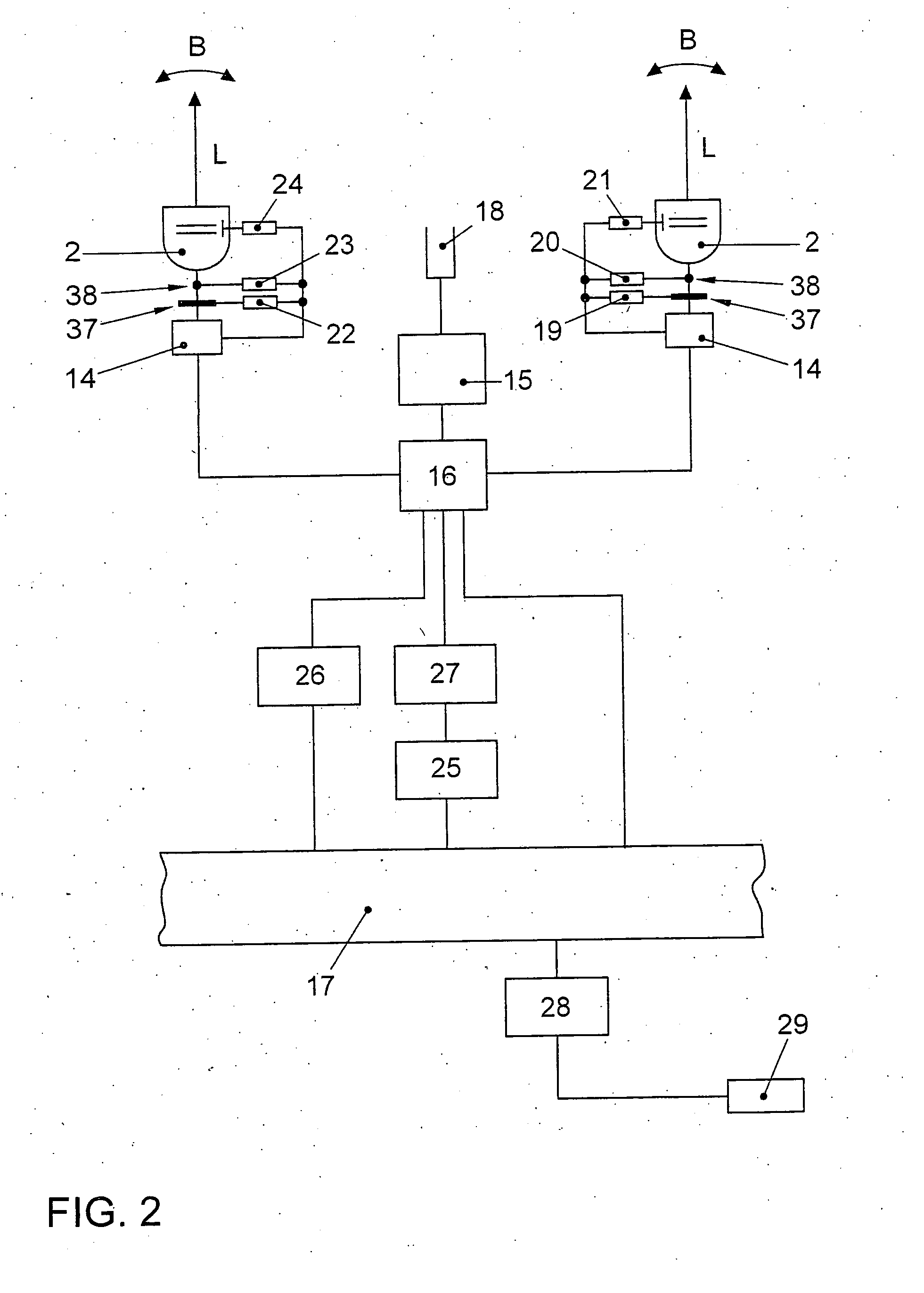Method for Controlling a Headlamp System for a Vehicle, and Headlamp System
a headlamp system and vehicle technology, applied in vehicle headlamps, transportation and packaging, instruments, etc., can solve the problems of reducing the delay time, reducing the effect of blinding other road users, and no vertical light-dark cutoff in the center of the total light pattern
- Summary
- Abstract
- Description
- Claims
- Application Information
AI Technical Summary
Benefits of technology
Problems solved by technology
Method used
Image
Examples
Embodiment Construction
[0119]The headlamp system, which is shown schematically in FIG. 2, includes two projection headlamps 1 and 2 which are set apart from each other and situated in the front on the right and left side of the vehicle, in a, e.g., conventional manner. One of these projection headlamps 1, 2 is shown in FIG. 1. Projection headlamp 2 situated on the other side has substantially the same design.
[0120]FIG. 1 shows a section of projection headlamp 1 in a plane that is parallel to the plane defined by the longitudinal vehicle axis and vertical V. In the conventional manner, projection headlamp 1 includes a light source 3, which is surrounded by a reflector 6 implemented as rotation ellipsoid. Reflector 6 thus has two focal points. Light source 3 is located in one of the focal points of reflector 6. The light emitted by light source 3 is reflected by reflector 6 in light emission direction L of projection headlamp 1, in the direction of a projection lens 7. A diaphragm array having planar diaphr...
PUM
 Login to View More
Login to View More Abstract
Description
Claims
Application Information
 Login to View More
Login to View More - R&D
- Intellectual Property
- Life Sciences
- Materials
- Tech Scout
- Unparalleled Data Quality
- Higher Quality Content
- 60% Fewer Hallucinations
Browse by: Latest US Patents, China's latest patents, Technical Efficacy Thesaurus, Application Domain, Technology Topic, Popular Technical Reports.
© 2025 PatSnap. All rights reserved.Legal|Privacy policy|Modern Slavery Act Transparency Statement|Sitemap|About US| Contact US: help@patsnap.com



